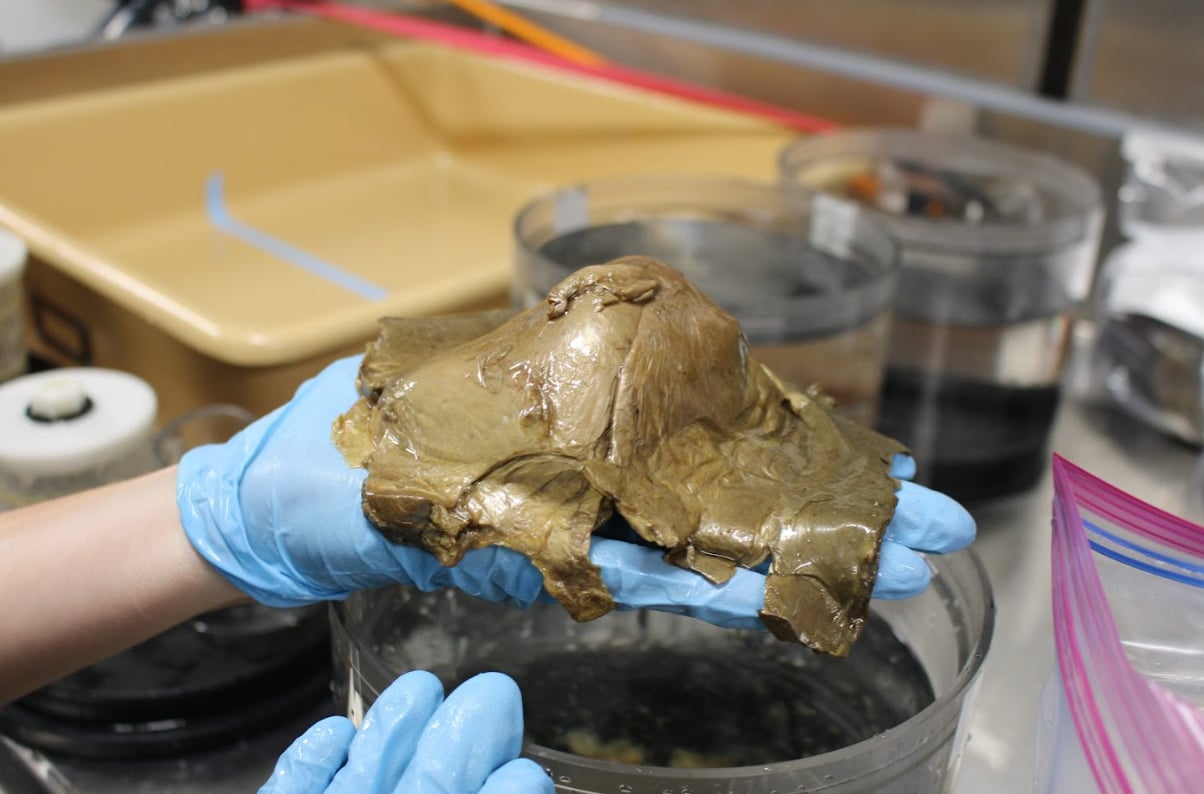
Marine scientists exploring the ocean floor in the Gulf of Alaska have discovered a mysterious, golden orb-like specimen.
Researchers at the National Oceanic and Atmospheric Administration (Noaa) found the shiny specimen at a depth of two miles while operating a remote-controlled submarine explorer as part of the Seascape Alaska 5 expedition.
Spotted in an underwater field of white sponges, the dome-shaped object, which measures four inches in diameter, was affixed to a rock and bore a hole at its base, revealing a similarly colored interior. The discovery was livestreamed on August 30 with Noaa team members expressing their confusion. “I don’t know what I am looking at,” one scientist said.
The unidentified specimen was found on a rocky outcropping at a depth of about 2 miles. Image: courtesy of NOAA Ocean Exploration, Seascape Alaska.
Even after zooming in on the specimen and prodding it with a remotely operated arm, the scientists remained baffled. While trying to identify the object, team members put forward a range of suggestions including a yellow hat, a chunk of coral, an egg casing, and a dead sponge.
After observing it via camera, the specimen was gently removed from the ocean floor using a suction sampler.
“While we were able to collect the ‘golden orb’ and bring it onto the ship, we still are not able to identify it beyond the fact that it is biological in origin,” Sam Candio, the expedition’s coordinator said in a statement.
The unidentified specimen was collected using a a suction sampler. Image: courtesy of NOAA Ocean Exploration, Seascape Alaska
Although the ship contains a laboratory, it lacks the sophisticated tools necessary to properly investigate the specimen. Scientists hope ensuing DNA tests will be able to identify if it’s a known species, a new species, or an unknown life stage of an existing species.
“It serves as a reminder of how little we know about our planet,” Candio said. “New species have the potential to reveal new sources for medical therapies and vaccines, food, energy, and other societal benefits.”
This speaks to one of the primary goal of the Seascape Alaska 5 expedition, which ran from August 23 to September 23, namely to explore ecologically and economically important deep water habitats in unexplored regions off Alaska.
More Trending Stories: